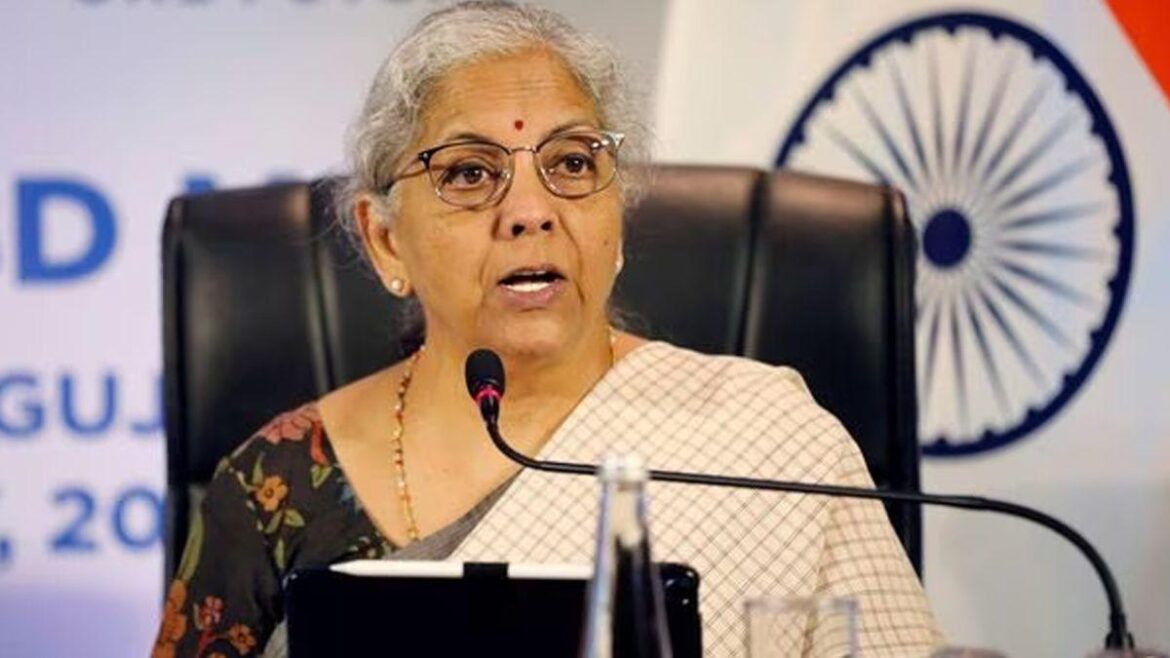India Pushes Back on ‘Tariff King’ Image Amid Ongoing Trade Talks with US
India’s finance minister Nirmala Sitharaman has publicly rejected claims that India is a ‘tariff king’, a label frequently used by former US President Donald Trump. Speaking at the Exim Bank Trade Conclave 2025 in New Delhi on Monday, Sitharaman clarified that India’s effective tariff rates are far lower than the rates often cited by critics overseas.
What Happened in New Delhi
During her address, the finance minister underscored a critical misunderstanding about how tariff policies are framed and executed in India. While Parliament approves higher maximum tariff rates, the government typically enforces rates that are well below those ceilings.
“The effective tariff rate is at a far lower level. But what gets published in the Gazette would be the level for which you obtain permission from the Parliament,” Sitharaman said. “And it is that level which appears everywhere and people then tend to think, probably rightly, that is the rate at which we are imposing tariffs.”
Sitharaman’s statement comes as India and the US work to finalize a trade agreement before a 9 July deadline. The Trump administration had threatened to reimpose a 26% reciprocal tariff on Indian exports, a move currently suspended to allow for continued negotiations.
Why is India Being Called a Tariff King?
The term “tariff king” traces back to when Donald Trump first used it in 2019 and repeated it earlier this year. The former President accused India of disproportionate tariffs on American products. The US had implemented a 10% baseline tariff across imports, and the 26% reciprocal tariff was calculated through a controversial method involving trade deficits and export volumes.
Critics of the approach called it overly simplistic and retaliatory. India’s actual trade framework, according to Sitharaman, tells a very different story.
How India’s Parliamentary Tariff System Works
This might be where the confusion begins. India’s tariff process includes two important steps:
- The government seeks permission from Parliament to set a maximum allowable tariff rate on a product or category.
- Once approved, the Ministry of Finance issues a notification in the Gazette setting the effective tariff, which is usually much lower than the approved ceiling.
The problem? Most foreign observers—and many media outlets—only see the Parliamentary approval figure. That high rate becomes the headline number, even though it’s not what’s actually applied in real trade scenarios.
Sitharaman admitted this has contributed to a “not-so-desirable” view of India’s trade policy, making it look more protectionist than it is in practice. “For those of us who still think there’s something about the tariff story in India, I want this to be clear. There are only eight rates, including the zero rate,” she said.
US-India Trade Talks: What’s at Stake
The pressure is mounting. A suspended 26% tariff on Indian exports is looming, with a deadline set for 9 July. If the two countries fail to reach an agreement by then, Indian exporters could face steep duties that would damage key sectors like pharmaceuticals, textiles, and electronics.
“Negotiations are intensely going on,” Sitharaman said, hinting at a possible breakthrough but offering no details. With Indian exports already under stress from unstable global demand and inflationary pressures, failure to strike a deal could hurt both sides of the trade relationship.
Growing Complexity in Global Trade
The global trade environment isn’t easy right now. From rising protectionism to currency fluctuations, Indian exporters are navigating a messier field. Yet Sitharaman highlighted that Indian trade is growing regardless—reaching a new peak this fiscal year.
- Total exports (FY25): $825 billion
- Growth over FY24: 6%
- Exports in 2013–14: $466 billion
Behind these numbers, the shift in India’s export basket tells an even deeper story.
PLI Schemes and High-Value Export Growth
One of the biggest export game-changers? India’s production-linked incentive (PLI) schemes. These initiatives, aimed at boosting domestic manufacturing and value addition, have significantly reshaped what India sells to the world.
According to Sitharaman, the schemes have tilted India’s exports away from low-margin commodities toward high-value sectors. Apple’s contract manufacturers in India, for example, now exceed 20% domestic value addition in iPhone production—letting India claim a larger share of the pie in global electronics supply chains.
Top 10 High-Value Products Added Post-PLI
- Smartphones (e.g., iPhones manufactured in India)
- Semiconductors & chip components
- Medical devices
- Solar photovoltaic modules
- Electric vehicle components
- Drones and unmanned aerial systems
- Active pharmaceutical ingredients (APIs)
- White goods (e.g., air conditioners, refrigerators)
- Textile fabrics with technical enhancement
- Specialty steel
This shift could not only make India more globally competitive but also reduce reliance on imports from China and other manufacturing giants.
What’s Next for Indian Tariff Policy
Sitharaman emphasized that India is actively reforming its tariff regime. Out of dozens of rates previously applied, only eight remain—making the entire framework easier to navigate for exporters and trade partners alike.
The finance minister pushed back not just against labels, but against assumptions. “Those who believe in US commentary should understand our system first,” she said. While the ‘tariff king’ smear may be catchy, it might also be lazy. India’s policies, at least on paper and as implemented, tell a more nuanced tale.
As the 9 July deadline looms, all eyes are on New Delhi and Washington. Can the two countries reach a deal and put this tariff tangle behind them?

